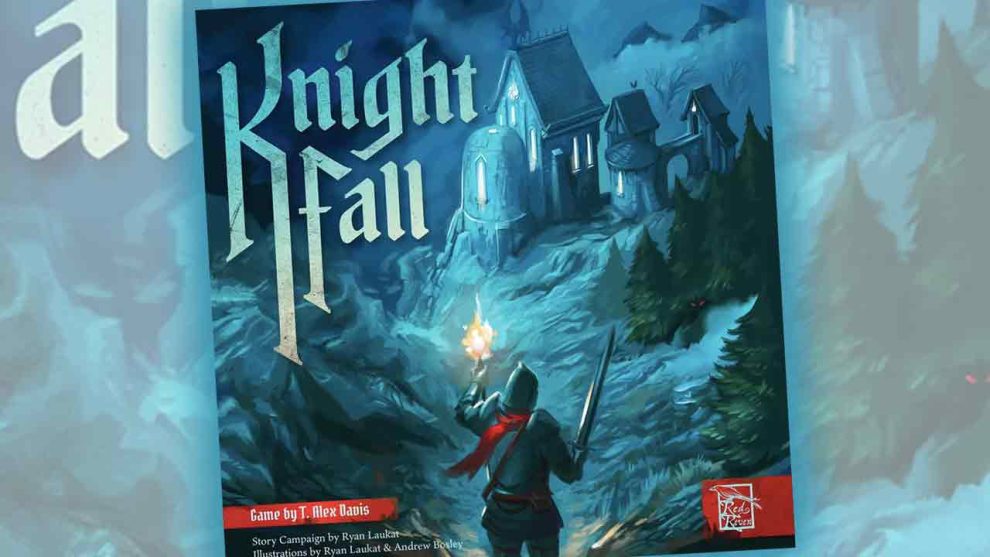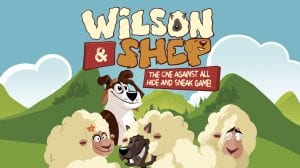I love direct conflict games, but I usually don’t have the time to invest in a four- or five-hour wargame.
I hate games where I have a character with powers, health points, and a cool mini, only to see that beloved treasure get murdered off the board, forcing me out of action or out of the game completely.
I love it when games force combat by providing a tiny map and start characters with so little health that there’s a chance you could team up on a character and score a point for a kill on the same turn after that character spawned onto the map.
I hate it when games overburden the solo mode by making the automa rules so difficult that I need to refer back to the rulebook over and over again.
I love seeing value for the money. For a game’s MSRP, I want to get lots of stuff in the box, and ideally, that stuff is well-produced.
I hate terrible rulebooks, especially ones that miss on providing the right kinds of examples or well-written flavor text.
So, now you know a little bit more about me. Also, you now know why Knight Fall (2022, Red Raven Games) is one of my favorite games of the year.

“That’s a Kill!”
Knight Fall, designed by T. Alex Davis, is a one-hour skirmish game that features three game modes: competitive, cooperative, and campaign.
If you want to go all-in on a story written by Ryan Laukat (Red Raven’s co-founder and the designer of text-rich campaign games like Sleeping Gods), you can do that. In what might be the shortest “campaign game” I’ve ever played, you can knock out a campaign in 90 minutes, maybe less.
Or, you can just skip the story and jump into one of the shorter game formats so you can get right into the skirmishes. Please note: things die in Knight Fall a lot, thanks to its super-simple combat system.
I found myself uttering “that’s a kill” constantly during Knight Fall because every target is dangerously low on health.
In competitive mode, 2-6 players split into the two sides of the Knight Fall combat equation: knights, or demons. Starting health points for demons range from 5-9 points, whereas knights always start with 6 health and 1 point of defense, and that defense rating can be raised by using cards to beef up on your defense track.
The end game condition is simple: the first team to reach the front door of the monastery—nine points for the knights, or ten points for the demons—wins the game. So, it’s a race. Opposing teams score one point for killing off a rival character, knights score one point at the end of every round, and demons score two points for killing elders, defenseless standees from the community scattered around the map.
On a player’s turn, they will draw three cards from their faction’s power card deck, plus a fourth card, a “basic action” card (yes, that’s the formal name for it) which is used every turn. No saving cards for later, no long-term strategic planning, no way to game the system. I love how much that limits choices on a turn, meaning downtime in Knight Fall should be minimal.

Still, you’ve got plenty here to try to plan a useful turn. Most cards have a primary action, with text that describes a way to do something pretty cool: damage all the players on a single adjacent tile, teleport to any other tile to take actions, heal allies a little, or heal them a lot if no enemies are sharing a tile, etc.
Every card also has a secondary action, either one set or a choice between two sets of double actions that can be split across multiple targets on a turn. You can even discard a card for a minor action: a single attack, a single heal, a single magic symbol. Combined with the basic action card, you can do quite a bit on a single turn, so it always feels like you can create sweet combos on your first turn of the game.
You want more? Each character has an ongoing power and a magic ability, which can trigger when playing two magic symbols on the same turn. And some of those sweet combos are a blast to unleash on opponents.
Right out of the gates, those character choices are great. Nineteen choices are available (9 knights, 10 demons) and many of them add additional components to the game without complicating gameplay. Plus, minions are added to the map that can aid players in taking actions and scoring points, so those minions can be vital to securing victory in such a volatile combat environment. Knights get stone golems, while demons get access to a pool of Imps that can really muck up the plans of the good guys.
What makes all the combat so straightforward is the inability to defend yourself. The level of deterministic gameplay here is perfect for me: when it’s my turn, I’m going to deal out four points of melee damage, and all you can do is watch. But you knew that when you finished your last turn. The reality of your situation is how can you ensure that you set up your teammates, or maybe your future turns?
Knight Fall could have been built as an endless dice-rolling affair, which usually kills skirmish games for me. Knight Fall, in the wrong design hands, could have allowed for players to have a hand of cards that could also have been used for defense during another player’s actions. No thank you. Knight Fall is a freight train, and it’s coming right at you.
This means that Knight Fall won’t be for everyone. But watching the world burn makes the game a winner for me.

I’m Back in the Fight
Your death scores a point for the opposition, but good news: even when a character you control is killed, you get to respawn back on the map on your next turn. You get a new character, a full health bar, and the chance to make an impact right away.
Sure, your death last round cost your team a point. But if that was to kill off an elder on your next turn, that net-net worked out for you, right? It might have even won the game for the demon faction.
Knight Fall gets this part right. Life is precious, but not in board games. And we aren’t here to watch you hide in the back corner of a tiny map. Aggression is rewarded here with fun tactical play and tight end-game moments. All five games of Knight Fall that I have played ended close, with scores in competitive and cooperative modes ending 10-9 or 10-8 each time.
Low downtime and unlimited respawns mean that you won’t burst into tears when your Imp Lord, Wind Knight or Bone Crusher character eats it mid-game.
Where this changes is in the campaign mode, where you will miss out on scoring opportunities if your pool of knights begins to die too quickly. Your respawns are limited to the nine knights in the deck. If they all die, you lose the game. For better or worse, that won’t happen to you in the campaign because the game suddenly becomes too easy.

The Campaign—Great Writing, Devoid of Conflict
The campaign mode, designed and written by Laukat, fills in the backstory gaps from the other two modes: Why am I here?
One or two players can use the campaign scoring pads to go on an adventure that feels right out of 1988. Using the flipped side of the pad, players start in the southwest corner of the map at a well in the middle of a village. You’ll draw your way northeast to try to get to the monastery to play a round of what essentially plays as the other two game modes.
But first, Laukat fills in the blanks thanks to his typically strong fantasy worldbuilding. The storybook for the campaign reads well, but you’ll only read this a couple of times because once you know where all the best items are, I don’t think the campaign will warrant repeated plays.
It definitely won’t warrant repeated campaign plays to provide anything resembling a challenge. In the campaign, your knights start at that well then explore a spot on one of the 6×6 map grid’s squares on most turns.
Often, you’ll turn over a dead body of a villager or explore a building in town to find a key, or a couple of silver coins, which can be used to make the campaign even easier than it already is. Rarely, you will stumble into a small battle with specific demons using a map built from the flipped sides of the game’s tiles. These small battles are fun, but despite my best efforts, I never got into more than three such battles in a single campaign.
The campaign is a great addition to extend the life of the game. I would start with the campaign, mainly to learn the game’s world and its mechanics. I just wouldn’t make a buying decision based on the campaign—there just isn’t a reason to revisit it more than once. I played it twice, and I did that mainly to explore all the exploration sites on the map, but the second play didn’t add much value.

The Verdict: Buy It
Knight Fall is really good. It is definitely going into my collection (I keep less than 20% of review copies, for perspective) because of the excellent, easy-to-teach competitive mode. The skirmishes and combos are a blast, and you don’t even have time to wipe the tears away from your eyes after losing your character because you are so quickly back into the game.
At least, that’s true if you play this game with four or less players.
Knight Fall plays up to six players, but I’m not sure I want to try it at six. For me, the game’s scoring mechanic doesn’t scale with its player count, so it’s almost too short if there are two teams of three players in the game. Plus, turns are quick, but I’m not sure I want to wait even five minutes to take my next turn in a game set on a map this small with such a tight end-game scoring condition.
The campaign is the only negative; there’s so much other great stuff here that I can rest assured Knight Fall will land on my list of top games for the year. I’m already looking forward to expansion content or additional games using the Knight Fall system.












Was this a game that they had on KS and pulled originally?